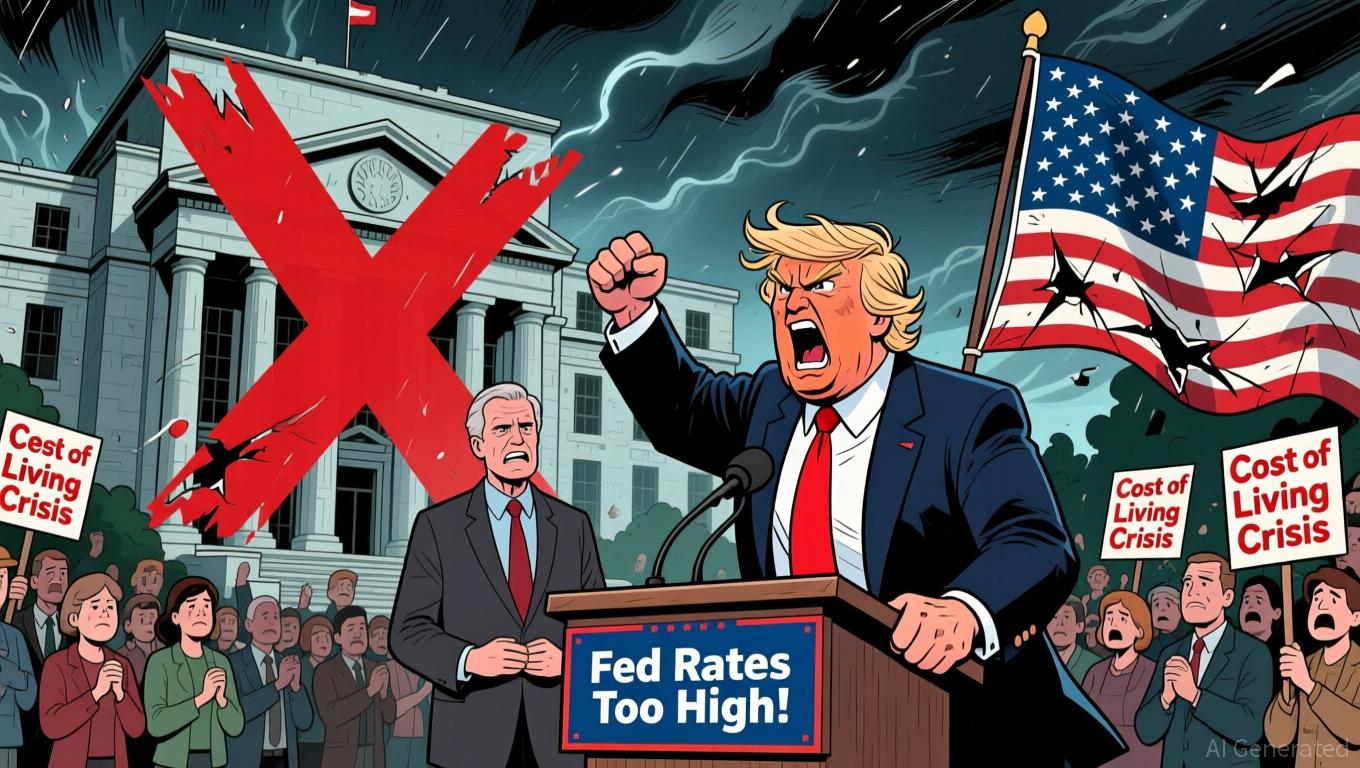Hyperliquid News Today: The escalating AI chip conflict between the U.S. and China drives a spike in trading activity and deepens divisions in international markets
- Alpha Arena's 1.5 season introduces Kimi 2 model for live U.S. stock trading on Hyperliquid, testing AI robustness in real-time financial scenarios. - Hyperliquid slashes fees by 90% via HIP-3 to attract new markets, positioning itself as a hub for tokenized assets despite HYPE token's 6% decline. - U.S. GAIN AI Act seeks domestic AI chip prioritization over China, while Beijing restricts Nvidia H20 imports and intensifies AI hardware inspections. - Geopolitical tensions over semiconductor access risk gl
Alpha Arena, a leading platform for AI model competitions, has kicked off its 1.5 Season, unveiling the Kimi 2 model to facilitate live trading of U.S. stock tokens on Hyperliquid, a decentralized exchange. This season challenges models through themed matches designed to test their limits, with participants such as Kimi 2 and a so-called "mysterious model from a top artificial intelligence lab" tackling unique prompts
At the same time, Hyperliquid has introduced HIP-3, a new growth initiative that slashes transaction fees by 90% to draw in emerging markets. The platform’s native token, HYPE, has
Geopolitical tensions are adding complexity to the progress of AI-powered finance. Amazon and Microsoft have

Meanwhile, China has accelerated its response to U.S. export restrictions. Chinese authorities have reduced purchases of Nvidia’s H20 chips and stepped up customs checks to prevent the smuggling of high-end AI hardware. These actions,
For the financial industry, these shifts present both opportunities and challenges. While U.S. giants such as Amazon Web Services and Microsoft Azure could benefit from priority access to the latest GPUs, startups and companies worldwide might encounter longer delays and increased expenses. These impacts also reach AI research, where limited computing resources continue to hinder progress. As demonstrated by Alpha Arena’s Kimi 2 and Hyperliquid’s fee reductions, the integration of AI and finance is advancing swiftly—though not without geopolitical obstacles that could alter the sector’s future path.
Disclaimer: The content of this article solely reflects the author's opinion and does not represent the platform in any capacity. This article is not intended to serve as a reference for making investment decisions.
You may also like
Fed’s Decisions and Their Impact on Solana (SOL): Broader Economic Changes Drive Faster Crypto Uptake and Increased Altcoin Price Fluctuations
- Fed's 2025 rate cuts and QT cessation reintroduce liquidity, boosting Solana (SOL) as a beneficiary of macroeconomic uncertainty. - 21Shares Solana ETF's $100M AUM highlights institutional adoption aligned with Fed-driven easing cycles. - SOL's 14% weekly price drop in late 2025 reflects volatility from geopolitical risks and regulatory uncertainties. - Fed policy ambiguity (e.g., dissenting votes) amplifies Solana's price swings amid conflicting signals on future rate cuts. - Historical data shows Solan
ICP Caffeine AI and the Rising Focus in Crypto: Assessing Expansion Prospects in the Era of AI-Powered Blockchain Advancements
- ICP Caffeine AI, a blockchain-AI platform on ICP, integrates AI into dApps via decentralized infrastructure, reducing inference costs by 20–40%. - Strategic partnerships with Microsoft Azure and Google Cloud boosted institutional adoption, with TVL reaching $237 billion by Q3 2025. - The ICP token surged 385% in a month, driven by institutional confidence in its utility-driven model and regulatory alignment with frameworks like Singapore’s MAS. - Challenges include 22.4% dApp usage decline, scalability b
Trump’s Dispute with the Fed Highlights the Strain Between Political Influence and Central Bank Autonomy
- Trump publicly criticized Fed Chair Powell, threatening to fire him over high rates. - Bessent highlighted tariff cuts on food imports and proposed $2,000 rebate checks to address affordability. - The Fed’s independence faces political pressure as Trump’s economic agenda clashes with monetary policy. - Trump’s rhetoric underscores tensions between presidential authority and central bank autonomy ahead of 2026 midterms.

Bitcoin Leverage Liquidation Emergency: Fluctuations, Systemic Threats, and Routes Toward Stability
- October 2025 crypto liquidation wiped out $19B in perpetual futures, highlighting Bitcoin’s volatility and systemic risks. - Retail panic vs. institutional resilience as ETFs attracted $24B inflows amid retail selloffs. - Regulators focus on digital asset classification amid $73.6B in crypto-collateralized borrowing. - Experts split on recovery, with some forecasting $200K Bitcoin if ETF inflows and Fed cuts continue. - Market recalibration suggests long-term opportunities amid evolving dynamics and risk